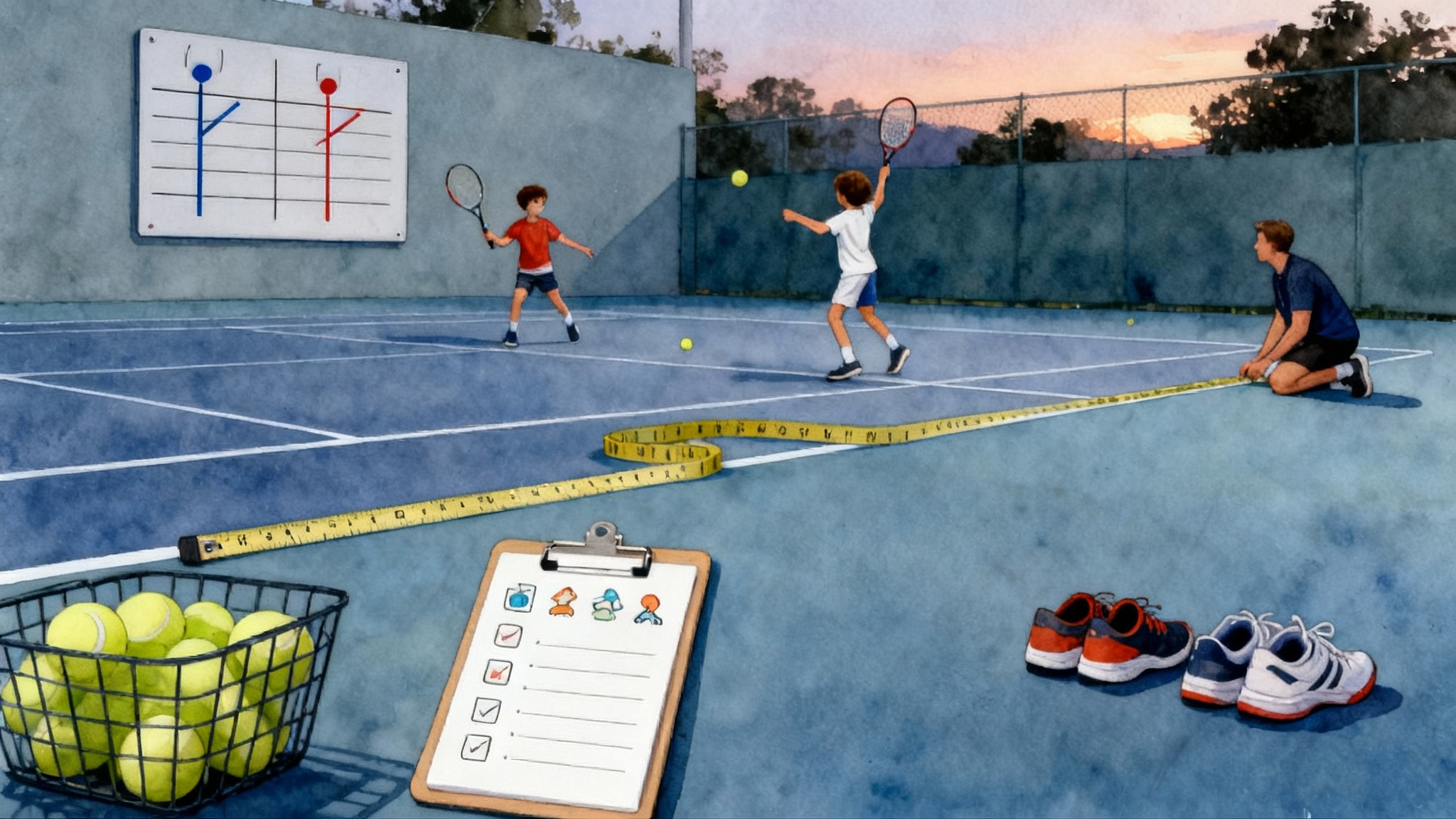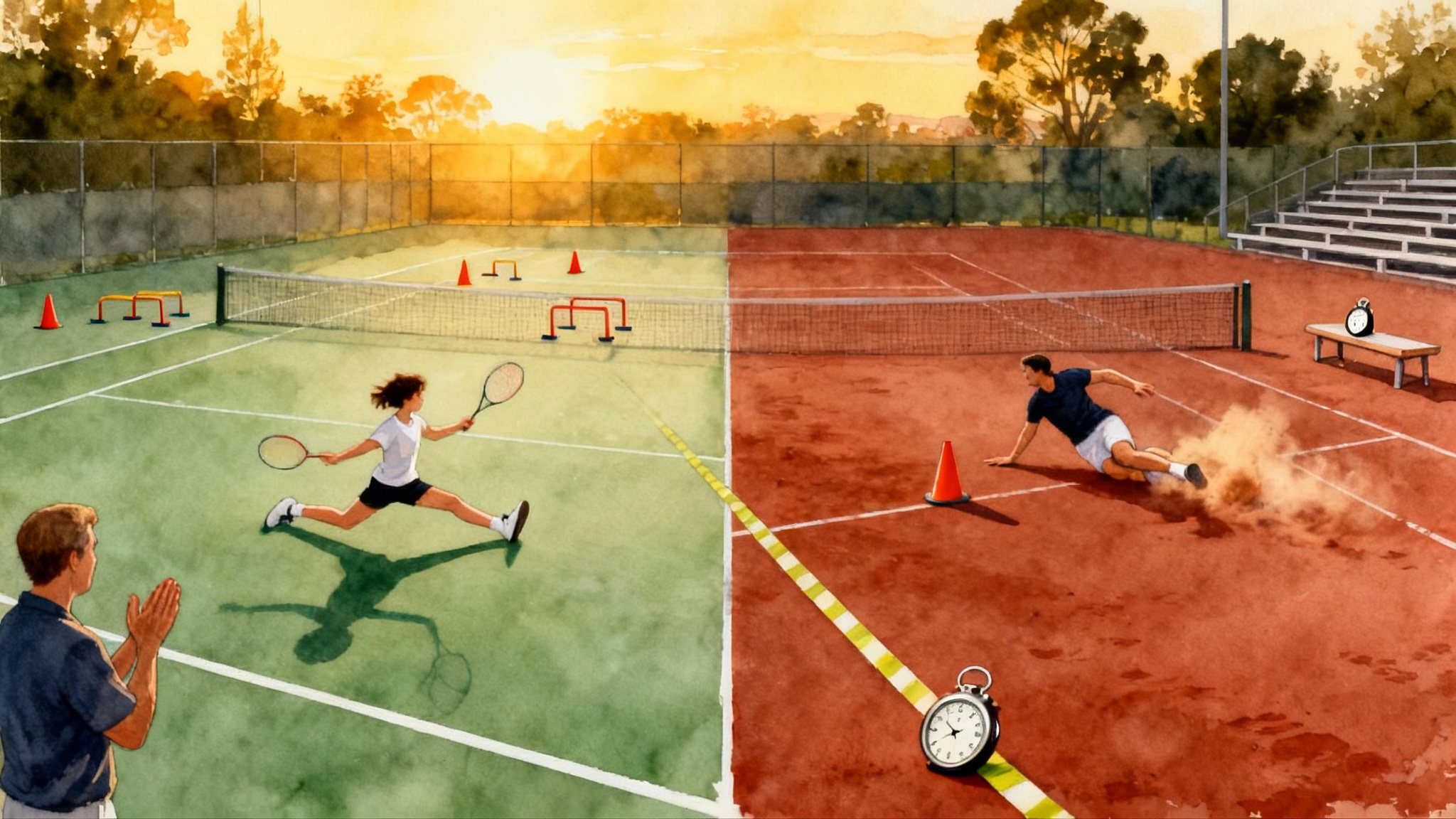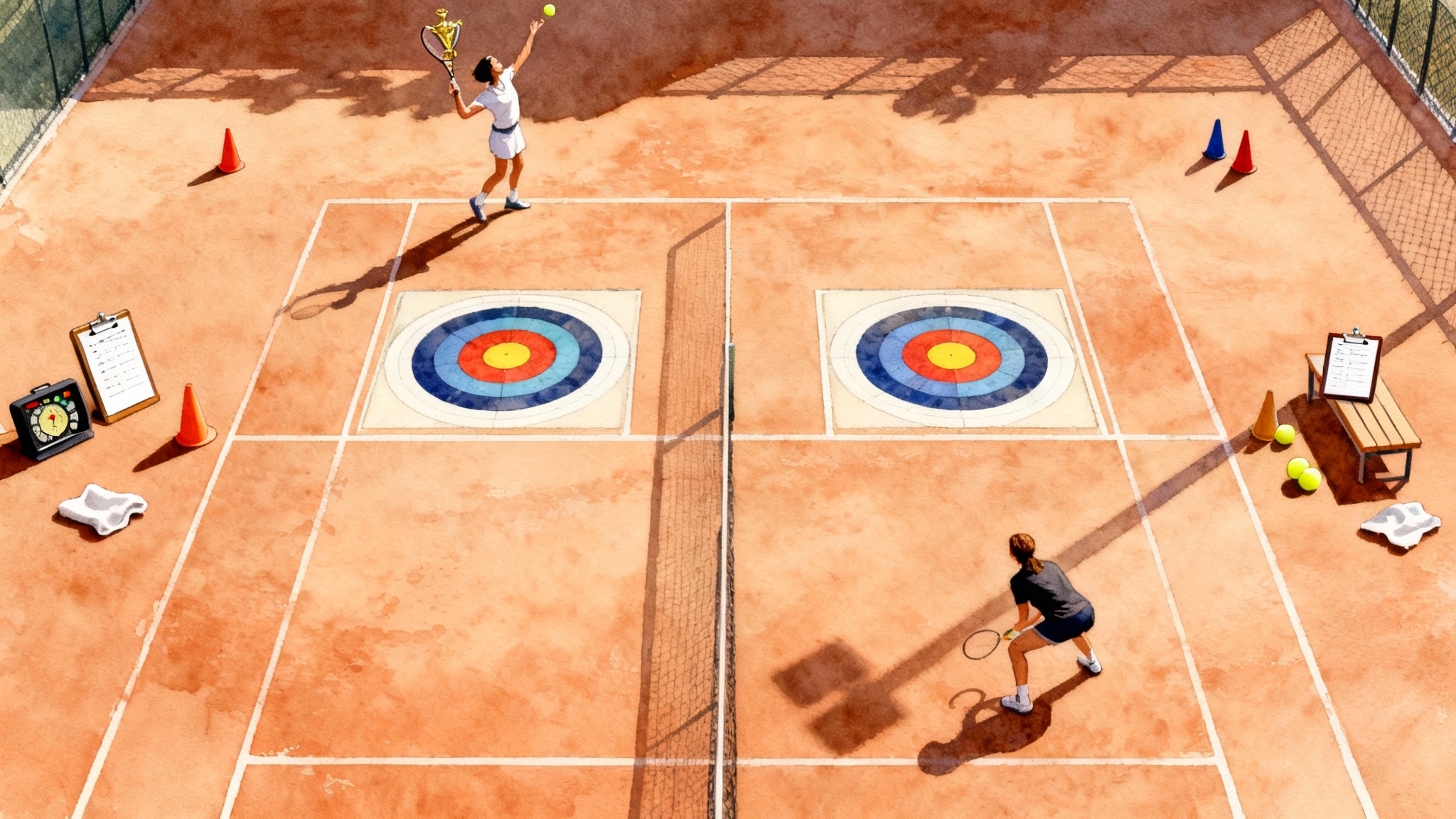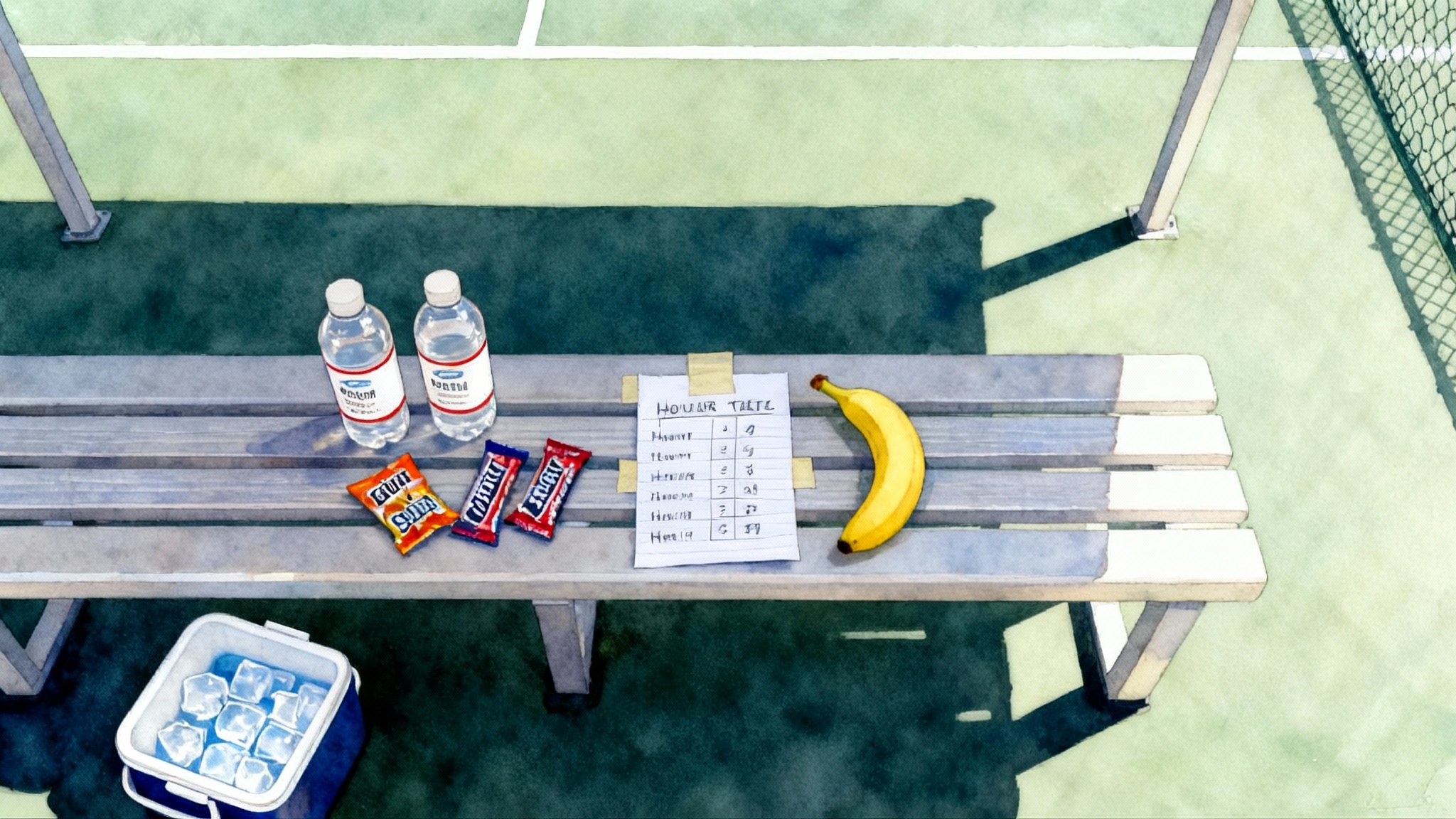UTR and WTN in 2025: Practical Match Planning and Training
A clear, non-recruiting guide to use UTR and WTN as development tools in 2025. Learn rating bands, 4–6 week training blocks, age and level checklists, sample calendars, and simple worksheets to plan competitive matches.
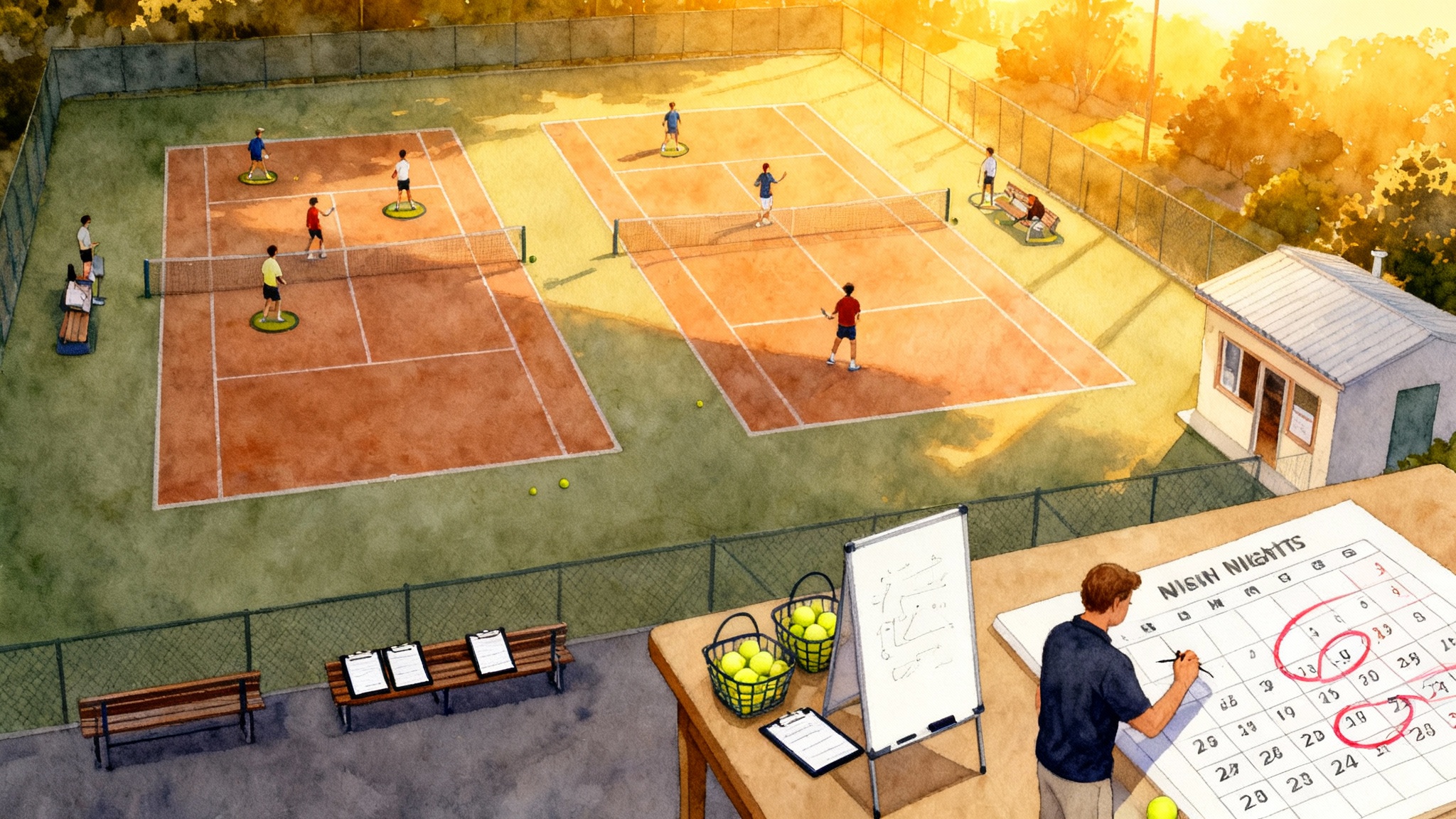
Why ratings matter for development, not status
Ratings can guide you to the right opponents at the right time. Used well, Universal Tennis Rating and World Tennis Number become a compass for scheduling, not trophies to collect. The payoff is a season that blends training with targeted matches that stretch you without overwhelming you.
This guide shows juniors, parents, and adult players how to translate ratings into weekly plans, tournament choices, and debriefs that lead to steady skill growth.
UTR and WTN, explained in plain English
- UTR, Universal Tennis Rating, places players on a continuous scale that reflects opponent quality and score margins. It updates with match results and looks at who you played and how competitive the sets were. For background, see the official UTR Rating overview.
- WTN, World Tennis Number from the International Tennis Federation, uses a 40 to 1 scale, where lower is stronger. It considers singles and doubles separately and includes a confidence indicator that tells you how certain the number is. Learn more in the ITF World Tennis Number guide.
A rating is an estimate. It moves faster when you have fewer matches and less when you have a long history. Treat changes as signals, not judgments.
The core idea: the 60 to 70 percent competitiveness zone
Development happens in matches that are challenging but achievable. A simple target is to schedule most matches where your expected win probability sits around 60 to 70 percent. In practice:
- If you are favored slightly, you are pushed to close sets under pressure.
- If you face a small rating gap the other way, you practice problem solving without feeling out of your depth.
You do not need a precise formula to use this. The goal is to find opponents close enough to push you, with a few tougher matches and a few confidence builders around them.
Rule‑of‑thumb bands
Use these practical bands to build a weekly slate. They are approximations, for planning only.
- UTR: opponents within about 0.3 to 0.7 of your rating will often produce that 60 to 70 percent zone. Smaller gaps are fine for confidence. Larger gaps are better as occasional stretch tests.
- WTN: opponents within about 2 to 4 points usually sit in that same zone for many players with established numbers.
If your WTN shows low confidence, widen the band slightly and accept more variance until you log more results.
Build training in 4 to 6 week blocks anchored by targeted match play
Think in blocks, not one‑off weekends. Each block gets one technical theme, one tactical priority, and one physical focus. Then you anchor the block with planned competitive exposures that match your rating band.
- Choose a theme and constraint: example, backhand shape under pressure, with a constraint of hitting the first ball after serve crosscourt 80 percent of the time.
- Select 3 to 5 metrics you can count: first serve percentage under target pattern, rally ball depth past the service line, return contact point inside baseline, neutral ball error rate, break point conversion.
- Schedule competitive anchors: two rating‑appropriate match days in weeks 2 and 4, plus one stretch match in week 5.
- Plan debriefs: a 15 minute post match review the same day, then a short film review within 48 hours. For simple filming and tagging, see our video analysis at home guide.
Sample 6 week blueprint
- Week 1: baseline testing, target patterns, one friendly set within band
- Week 2: match day against an opponent inside the 60 to 70 percent zone, debrief
- Week 3: high volume pattern drills, point play, no travel
- Week 4: second match day in band, debrief, adjust metrics
- Week 5: a single stretch match slightly above band, film review
- Week 6: taper, internal ladder or doubles focus, reset goals
How to pick opponents and tournaments by rating bands
- Start local. Ask your coach or club director for a pool of players near your band range.
- Use internal match days. Organize round robins at your club with three short matches.
- For tournaments, pick draws that include a cluster of likely opponents inside your band, not just one possible good matchup.
- If travel is required, set rules in advance. Example: only travel when there are at least three potential band matches or when the event supports your current tactical theme.
Quick selection checklist
- Are at least two likely opponents inside your band?
- Will the surface match your training theme?
- Does the schedule allow a proper debrief and recovery day?
- Is the budget proportionate to the developmental value of the event?
Level‑based checklists
These checklists focus on habits that ratings can help schedule and assess.
10 and under
- Use green or orange ball as appropriate, focus on frequent play, not event prestige
- Aim for weekly competitive sets inside your band with a short court constraint
- Track two metrics only: serve toss consistency and rally length to five balls
- Post match review: one shot you controlled, one shot you lost control
Ages 12 to 14
- One technical theme per block, such as a shaped crosscourt forehand that lands deep
- Two band matches in weeks 2 and 4, one stretch match in week 5
- Add a serve plus one pattern and a return plus one pattern. For ideas, study first four shots patterns.
- Track four metrics: first serve percentage, return depth, neutral error rate, break point conversion
- Film two return games per match for review
Ages 15 to 18
- Map your game identity: patterns that win you points on hard and on clay
- Band matches make up 60 to 70 percent of total matches, stretch matches 20 percent, confidence matches 10 to 20 percent
- Build weekly strength microcycles aligned to match days
- Track six metrics including second serve points won and forehand to backhand conversion success
- Practice with match scoring constraints, such as starting at 30 all or no ad
Adults 3.0 to 4.5
- Set clear goals by position: singles rallies or doubles role clarity
- Schedule league or social ladder play within band, one stretch match every two weeks
- Use doubles patterns with signals on serve and a planned poach every second return game
- Track serve location success and first volley errors
- Protect recovery with two sleep priority nights before matches
Simple worksheets you can copy
Use these as text templates or make your own versions in a notes app.
Worksheet 1: expected competitiveness planner
- Your rating today:
- Opponent rating:
- Difference:
- My match type: confidence, in band, stretch
- Tactical focus:
- Two success metrics to watch:
- Benchmarks from practice:
- Surface and balls:
- Planned patterns on serve games:
- Planned patterns on return games:
- Win probability note: based on the rating gap, this sits near my 60 to 70 percent zone, or it is a stretch. I accept the risk and will focus on process scores.
For fast estimates many players use a simple rule. If the gap is small and inside the band, treat it as an in band match. If the gap grows, call it a stretch match and commit to process goals.
Worksheet 2: post match review
- Final score and set notes:
- Did I execute my two patterns 70 percent of the time: yes or no
- First serve percentage and return depth:
- Neutral error rate target hit: yes or no
- One decision I would repeat, one decision I would change
- Three practice tasks for the next seven days
- Rating lesson: no chasing, just note how the estimate moved relative to opponent strength
Sample monthly calendars
The goal is a steady cadence, not heavy travel. Here are two examples you can adjust by level and season.
Junior month, school in session
-
Week 1
- Mon: strength and footwork
- Tue: serve plus one patterns, 60 minute set in band
- Wed: live ball patterns, film returns
- Thu: consistency ladder, target 20 ball rally
- Fri: off or light mobility
- Sat: in house round robin, two short matches
- Sun: family day, 20 minute wall session
-
Week 2
- Mon: strength
- Tue: practice sets with scoring constraints
- Wed: match day in band, Worksheet 2 after dinner
- Thu: recovery and light serves
- Fri: film review
- Sat: cross training, biking or swimming
- Sun: 45 minute technical block
-
Week 3
- Repeat Week 1 with a slight intensity bump
-
Week 4
- Wed: second match day in band
- Weekend: local tournament with two likely band matches
Adult month, league season
-
Week 1
- Mon: mobility
- Tue: doubles patterns, planned poach
- Thu: ladder match in band
- Sat: singles set as fitness, confidence opponent
-
Week 2
- Tue: return games, chip and charge reps
- Thu: league doubles, in band
- Sun: film 20 points and tag errors
-
Week 3
- Tue: stretch match slightly above band
- Thu: drills that mirror stretch patterns
- Sat: recovery, light hit
-
Week 4
- Thu: league match, in band
- Sun: post block review and reset metrics
Case study: Tennis Innovators Academy, structured in house UTR match play
Context: Families want consistent competition without excessive travel. At the Tennis Innovators Academy profile, staff build a schedule that balances school, budget, and clear goals.
- Pooling by rating bands: players are organized into pods where most matchups land in the 60 to 70 percent zone. Each pod meets twice per month for a three match series of short sets.
- Anchored themes: every six week block has a published theme, for example, first strike depth and return plus one. Coaches design drills Tuesday and Thursday that feed directly into Friday match night.
- Transparent metrics: players carry Worksheet 1 into warmup. Coaches collect first serve percentage, neutral error rate, and a pattern execution score.
- Family coordination: the academy posts a calendar with class times, match nights, and suggested local events that offer multiple band opponents. Parents pre approve travel only when three likely in band matches are on the same weekend.
- Budget guardrails: families set a monthly ceiling for entry fees and travel. When travel occurs the academy replaces the following week’s match with a recovery plan at no extra cost to families.
- Feedback loop: on Sunday evenings players log Worksheet 2 in a shared folder. Coaches add two practice tasks and a short voice note.
- Progress lens, not chasing: coaches highlight process achievements, such as holding serve with a planned pattern three times in a set, rather than only rating changes.
Result after one block: players record eight to ten competitive sets, most within the target band. Match anxiety drops, and patterns from practice show up in competition. Families report lower travel stress and clearer decision making.
How juniors and parents can balance school, budget, and progress
- Put school first by setting a weekly cap on competitive hours. Example: two match days per month during exams.
- Use local internal events for 60 to 70 percent of competitive play.
- Travel only when it advances the current theme or exposes the player to needed styles such as heavy topspin or left handed slice serve.
- Keep a simple budget dashboard. Track entry fees, travel, and coaching time. If a month goes over, the next month leans on internal match play.
How adult players can use ratings without losing joy
- Ratings are a tool to find good partners and opponents. Use them to make weeknights more competitive.
- Agree on match goals with your partner. For example, two planned poaches per return game, or 70 percent first volley depth.
- Build a social ladder at your club and set bands so most matches are close, then add one stretch match every two weeks.
Turn ratings into actions: a step by step summary
- Set a six week block with one technical theme, one tactical priority, and one physical focus.
- Choose band ranges and create a pool of opponents inside those ranges.
- Schedule two in band match days per block and one stretch day.
- Use Worksheet 1 before matches and Worksheet 2 after matches.
- Track three to six metrics that you can influence next week.
- Review at the end of the block, publish a new calendar, and repeat.
Common pitfalls and how to avoid them
- Pitfall: chasing rating points with mismatched schedules.
Fix: pre commit to band based planning and publish your calendar to your coach and family. - Pitfall: ignoring doubles and surface variety.
Fix: add a doubles slot every other week and one surface change per block when possible. - Pitfall: overloading travel.
Fix: only travel when multiple potential band matches are likely and the event supports the current theme. - Pitfall: vague goals.
Fix: write targets that you can count on a scoresheet, such as return depth or pattern execution.
Final thought
UTR and WTN can be a measuring stick or a map. Choose the map. When you pick opponents by bands, anchor six week blocks with targeted match days, and review with simple worksheets, the numbers stop being a chase and start becoming feedback. That is how you turn a season into skill growth that compounds.
